The most protected ship in history
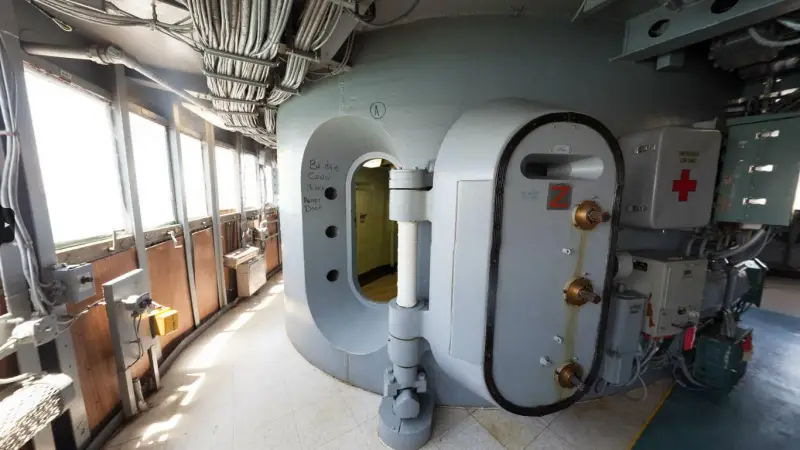
Iron strings of orders -
And there's a breaker in the sea
Stretched out from the wall.
Emergency situations,
Tasks have iron deadlines
And the waves are cast
With an iron tint.Valery Belozerov.
In the first half of the twentieth century, it was impossible to imagine a warship without structural protection. In one form or another it was present everywhere. Even modest-sized destroyers had anti-fragmentation armor for the wheelhouse, boiler casings and torpedo tubes.
Representatives of each class differed in their percentage of armor weight and displacement.
For the Japanese light cruiser Yubari, this value was only 8%. In absolute terms - 350 tons of armor plates, which were enough to equip a “citadel” with a length of 58 meters. The side of the cruiser along its entire height was covered with a belt 1,5 inches (38 mm) thick. Attached to its upper edge was a 1-inch (25 mm) thick deck. Modest indicators that provided only anti-fragmentation protection.
The designers of the heavy cruiser Mogami spent 15% of the standard displacement on providing protection. The figure of 2 tons indicated that the Mogami had impressive anti-ballistic armor.
For the Soviet Project 26-bis cruiser, this ratio reached 18%. Load items and displacement are related nonlinearly, so the smaller the ship, the greater the proportion of displacement that falls on its hull and power plant. The designers of the Maxim Gorky achieved outstanding results, managing to place armor protection weighing 8 tons on a light cruiser with a displacement of 200 tons.
The German “pocket battleships” of the Deutschland class allocated a quarter of their displacement to provide protection. Another record figure for ships with a standard displacement of 11–12 thousand tons.
On capital ships of the 1930s and 1940s, the weight of armor protection began to clearly outpace other load items.
To protect the Yamato, 20 thousand tons of armor plates were used. However, such a figure did not look stunning compared to the size of the Yamato itself. According to design data, the weight of the armor was only a third of the ship's standard displacement.
In the smaller weight category, the same ratio (33%) was possessed by the Italian Littorio-type aircraft and the British King George V.
Much more massive “shells” were carried by US Navy battleships.
More than 41% of the ship’s displacement was allocated to provide protection for the North Caroline class ship! For the larger and more advanced Iowas, this figure decreased slightly - to 39%. In reality, this meant the presence of 18–19 thousand tons of armor, depending on the characteristics of each ship.
With all the spectacular ratios and the presence of protection, second only to the Yamato in mass, the Iowa design was distinguished by daring and dubious decisions. Which does not allow us to draw clear conclusions when comparing it with competitors.
And now we have reached the top of the list. The furthest went were representatives of the German school, whose extreme armor was included in history.
The Bismarck's records were predictable due to the size of the ship. But it was quite unexpected to find another ship in the first place. Small battleship Scharnhorst.

For what purposes was such a high level of security achieved here? In the battleship project, which was considered “undersized” in all other respects. We will talk about this phenomenon in more detail.
Is it fair to call the Scharnhorst a battleship?
During this period, several projects of large ships arose, whose classification remained a mystery to historians.
The first group consisted of “supercruisers”, designed to combat conventional heavy cruisers. A striking example is the Alaska, for which the Yankees came up with the mysterious designation CB-1 (cruiser big). Well, a very large cruiser.
This also includes the unfinished Japanese B-65 project.
They went even further in the Soviet Union, where after the war a series of 36-ton Project 500 cruisers (Stalingrad) was laid down.
The second category were "small battleships", which were built for special tactical tasks, as well as due to various political and financial restrictions. The French “Dunkirk” and the German “Scharnhorst” fall under this description.
Scharnhorst was a transitional project, in which traces of the Versailles restrictions were still visible. He is called the direct heir of Deutschland, but in reality their paths diverged at the sketch stage. In the Scharnhorst project, the Germans applied all their accumulated experience in creating fast and well-protected battle cruisers of the First World War era.
The Dunkirk, an even more ridiculous and highly specialized “small battleship” with relatively thin armor and 330 mm artillery, was initially considered for the role of the main rival.
The Germans were very keen on creating a worthy opponent, and in the end they ended up with a couple of unique units. "Scharnhorst" and "Gneisenau".
"Untermensch"
The Scharnhorst main caliber projectile weighed 330 kg.
The British 13,5-inch shell was almost twice as heavy (720 kg). And this value was considered the most “unconvincing” among real battleship calibers. For example, the 16-inch guns of the South Dakota could rain down shells weighing 1 kg on the enemy.
Two of the four Kriegsmarine battleships had ridiculous (by class standards) firepower. The Germans understood the situation and came up with a formula in advance: replacing 3x3 283 mm with 3x2 380 mm.
Alas, even the appearance of six 380-mm guns would not have made the Scharnhorst a full-fledged battleship by the standards of the 1940s. For successful performances in the Major League, he lacked about 5 tons of displacement.
And while maintaining the previous reservation, coupled with the lack of desire to make compromises (an example of such a compromise is the artillery placement scheme on the Richelieu LC), the German problem had the only possible solution. To turn the Scharnhorst into a full-fledged battleship, an additional 10 tons were required. Which had nowhere to appear.
In terms of standard displacement, the “undersized” approximately corresponded to the large cruiser “Alaska”. And that's where all the similarities between them ended.
The total weight of the Alaska reservation was 5 tons (000%).
The Scharnhorst's combat stability was ensured 14 tons of structural protection. The visual equivalent of this value is 200 railway cars with rolled metal.
The weight of the Scharnhorst's armor protection was about 44–45% of its standard displacement. No other ship in history had a more similar ratio.
The result was something unimaginable. The armor made it possible to withstand hits from shells of the largest caliber (381–406 mm). However, the composition of the weapons categorically prohibited the Scharnhorst from approaching an enemy armed with 15/16 inch guns.
In 1941, during a raid in the Atlantic, Scharnhorst and Gneisenau discovered a convoy where the elderly battleship Ramilles (1913) was guarding it. The commanders of the German raiders considered that 283-mm guns would not be able to ensure quick reprisals against such an opponent. The dashing raid threatened to turn into an exhausting duel, where shells weighing 870 kg could arrive in response. Having correctly assessed their chances, the “raiders” disappeared over the horizon...
For all the heaviness of its armor, the Scharnhorst did not look like a clumsy barge. It was built in an era of universal passion for speed and received a power plant of enormous power (160 hp). This value exceeded the performance of the Bismarck power plant. Nowadays, even nuclear cruisers do not have such characteristics. The Scharnhorst's full speed exceeded 000 knots, and its fuel reserve allowed it to cover a distance of 30 miles at 15 knots.
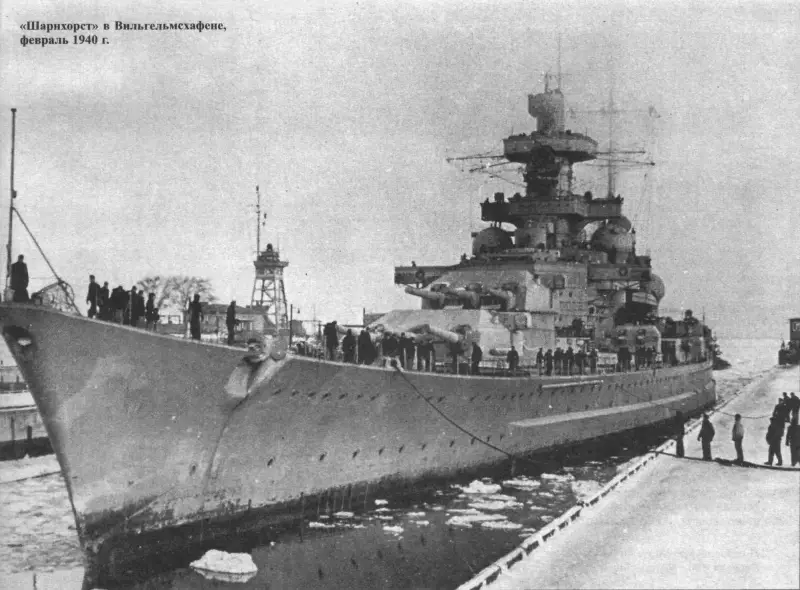
Speed made it possible to dictate “unfair” rules of battle. It is easy to “run away” from a stronger opponent, reserving the right to attack anyone who was obviously weaker. Taking into account the fact that the vast majority of ships had no way to repel the ultra-protected monster with fast-firing 283 mm guns.
An absurd, at first glance, comparison of the Scharnhorst with the Alaska demonstrates that with a similar displacement (30-32 thousand tons), the Germans managed to build a ship with incomparably higher combat qualities.
Considering the scale of the threat posed by it, the Scharnhorst had every reason to be called a battleship.
What were 14 tons of displacement spent on?
The vertical protection of the Scharnhorst was thicker than that of all battleships, including the legendary Yamato. The main armor belt of the Scharnhorst had a thickness of 350 mm.
For comparison: the thickness of the Bismarck belt was 320 mm. North Caroline-class battleships have 300 mm.
"Iowa" had a wedge-shaped belt of variable thickness (from 307 in its upper part to 41 mm in the bottom area).
LKs of the King George V type (up to 380 mm) and, of course, Yamato (410 mm) had significantly thicker belt armor.
But the Germans have prepared one more ace up their sleeve. Like other large German ships, the Scharnhorst received the so-called. carapace armored deck, which was attached with bevels to the lower edge of the belt. In other words, if the projectile nevertheless penetrated the main 350-mm belt, after a few meters a new obstacle stood in its path. The slab is 105 mm thick, and even located at a significant slope. This solution made it possible to repel any fragments or even the projectile itself, which had already spent the lion’s share of its energy penetrating the main belt.
The total thickness of the Scharnhorst's vertical protection (455 mm) was unexpectedly large compared to the performance of any capital ship.
Moreover, all this was achieved without falsifications or simplifications. Unlike American designers, the Germans denied the possibility of using an armor belt shifted inside the hull, considering it unreasonable to leave the outer part of the side unprotected.
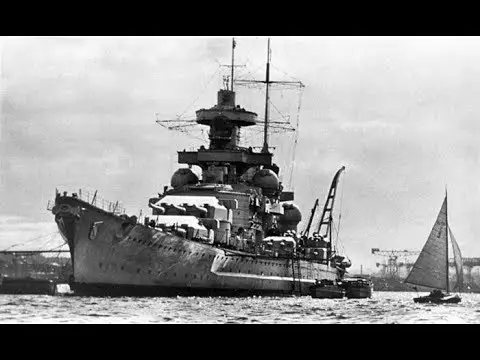
Above the main belt there was an “upper” anti-fragmentation belt 45 mm thick, reaching the height of the upper deck.
455 and 45 – the difference is colossal.
On the other hand, this value corresponds to the thickness of the main armor belt of the cruiser Nuremberg (later Admiral Makarov). In the case of the Scharnhorst, this was considered “light” anti-fragmentation protection, applicable to the upper part of the side. An example was given to remind the reader of the scale we are talking about.
Many of the German battleship's peers (N. Caroline, Richelieu, Yamato) could not even count on such protection. The innovative schemes of the Americans (“South Dakota”, “Iowa”) rejected the very presence of such an element as the “upper belt”. The armor of these ships was walled up deep inside the hull and covered only vital compartments.
Of course, there were projects with even more impressive casemate protection. Thus, the upper belt of “Littorio” had a thickness of 70 mm. But the real record holder was the Bismarck with a value of 145 mm.
But we return again to the baby Scharnhorst.
Its citadel ended at a distance of 41 m from the stem. The remaining part of the hull was covered with belt armor 70 mm thick. She covered it thoroughly, without jokes. The protective “strip” reached the very stem and reached a height of six meters.
A similar belt extended from the citadel towards the stern for a distance of 37 meters.
British or American battleships did not have even a semblance of such protection. The “all or nothing” scheme adopted by the Anglo-Saxons was good on a tropical day, when duels were fought at extreme distances. In such conditions, landmines were not fired, and rare hits from “armor-piercing” weapons could not seriously damage the ends. The main threat came from attacks on the citadel area - and all efforts were aimed at covering vital sections.

Scharnhorst was created for a different theater of war. In the unpredictable conditions of the northern seas, it was considered necessary to have protected ends.
In truth, such a scheme was necessary for any seas. It’s just that most rivals did not have the displacement reserves for such “excesses.”
The remaining parameters of the Scharnhorst were also impressive. In accordance with all the ideas of that time.
Horizontal protection
The Scharnhorst had spaced horizontal protection, consisting of two armored decks. A very archaic solution, nevertheless, it had its merits.
As a rule of thumb, the strength (projectile resistance) of an armor plate is proportional to the square of its thickness. In other words, one thick armored deck provides 4 times better protection than two spaced decks with a total of the same thickness. Therefore, by the beginning of World War II, priority was given throughout the world to schemes with a single (main) armored deck of maximum thickness.
On the other hand, the upper deck left unprotected made the ships overly “sensitive” to hits from aerial bombs.

Scharnhorst remained true to its Teutonic traditions. And its entire upper deck was armored along the entire length of the hull. Such pleasure cost the designers 2 tons of displacement, and the deck thickness was 000 mm.
As demonstrated by examples of other ships, armored decks 50 mm thick successfully withstood hits from 500-pound (200–250 kg) semi-armor-piercing and high-explosive bombs. The problems of these ships (usually cruisers) occurred due to the fact that their armored decks ran at a level just above the waterline. And by this time the bombs had managed to severely damage the hull. In the case of the Scharnhorst, this was only the first layer of protection protecting its upper deck.
For large-caliber armor-piercing bombs, encountering such an obstacle also meant premature arming of the fuse. And what’s even worse is the deformation and violation of the design of the ammunition itself.
Having pierced the upper armored deck of the Scharnhorst, large bombs could travel another 5 meters before they had to meet the main armored deck of the battleship (the total weight of this structure is 3 tons).
The main deck provided protection for the compartments inside the citadel and had a differentiated thickness - from 80 mm above the engine rooms to 95 mm in the area of the ammunition magazines. On bevels it increased to 105 mm.
In the space between the upper and main armored decks there was another battery deck made of “ordinary” structural steel 20 mm thick, the presence of which was not taken into account in the protection scheme.
The total thickness of the horizontal armor (130–155 mm) did not look unusual compared to the indicators of its peers. Such indicators corresponded to the Italian “Littorio” or the British “King George V”. With the difference that the latter had a single (main) armored deck of impressive thickness (127–152 mm), while refusing to protect the upper deck and all the rooms that were located under it.
The design of the Japanese and American giants (1,5–2 times larger than the Scharnhorst) used horizontal protection with values of 200 millimeters or more. And if the multi-layer protection of the Iowa combined the presence of a thick main deck (≈150 mm) with attempts to book the upper deck (37 mm), then the creators of the Yamato made a rash decision.
All the Japanese hopes were pinned on the enormously thick main deck (200...230 mm), which ran too low, leaving significant volumes of the hull without any protection.
In fairness, it is worth noting that Scharnhorst experienced similar problems. Due to its limited displacement, its main deck was level with the waterline. And, as follows from the diagram, all the compartments and rooms in the upper part of the hull had no other protection except the upper armored deck 50 mm thick. However, it was by no means a “bare” body, like the Yamato.
Artillery protection
In addition to the power plant, outstanding parameters and a heavily armored hull, the Scharnhorst was supposed to carry weapons with a total weight of 5 tons. All this also required serious protection.
I will try to highlight the most striking moments for you.
According to German rules, the Scharnhorst's turrets were supposed to have protection at the same level as the main gun turrets of other battleships, regardless of the difference in gun caliber. But the desire to have 360 mm protection in the frontal part of the tower faced the problem of balancing the entire structure. The relatively “lightweight” 11-inch guns could not cope with the task.
As a result, the Scharnhorst towers had one curious feature. An exceptionally thick layer of armor protected the rear of the turret (350 mm).
These delights of German designers took another 2 tons of displacement.
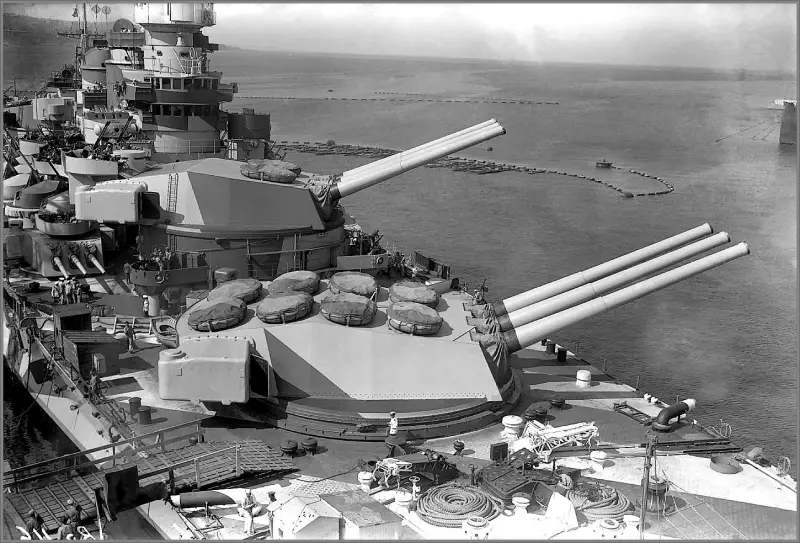
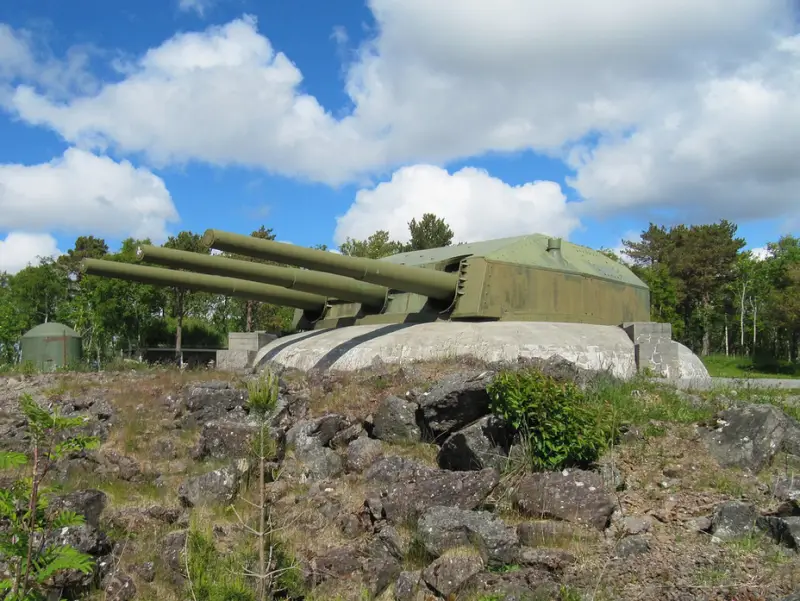
The Gneisenau stern tower, which protected the entrance to Trondheims Fjord. The last shooting took place in 1953.
The Germans took the defense of medium-caliber (mine-resistant) artillery just as seriously. All four turrets with six-inch guns had 140 mm frontal armor and 60 mm thick side walls.
Compared to the German solutions, the 25-mm protection of the SK towers on the battleships Nelson and Yamato simply looked like an inappropriate joke. As for the rest of the British and American battleships of the later period, their armament completely lacked medium caliber. All powers of the Investigative Committee were transferred to universal 5" caliber guns. Therefore, there is no reason for comparison here.
Finale
The structural protection of the Scharnhorst was not limited to just decks, belts and super-protected gun turrets. One could narrate here for hours. About double traverse bulkheads, which provided a total protection thickness of 350–400 mm in some areas. About the armoring of conning towers, the original protection scheme for steering gears and propeller shafts.
Underwater hull protection deserves a separate chapter. Such protection was not the responsibility of thick armor plates. The ability to maintain speed and combat effectiveness after encountering a torpedo/mine has always been determined by the size of the ship itself. Also important were such points as the internal layout and depth of the PTZ (empty compartments that take the impact), the number of emergency generators and the performance of sump pumps. Due to its smaller displacement and narrow hull width (only 20 meters), the Scharnhorst was not as resistant to torpedo hits as its larger rivals. For example, the hulls of American battleships had a standard width of 33 m - and they could have been even “fuller” if their dimensions had not been limited by the Panama Canal.
But even a well-built ship with a standard displacement of 32 thousand tons was a complex and difficult target. As combat chronicles showed, there was no hope of even sinking a Scharnhorst-class battleship with one or two hits below the waterline.
“Scharnhorst” and “Gneisenau” became the leaders in the number of “attempts” made on them. Enormous forces, entire squadrons and air armies of the enemy were involved in the attacks on battleships. But all attempts to destroy them for three years did not give the desired results. "Scharnhorst" and "Gneisenau" came out of any trouble alive to continue to annoy the British the fleet.
At the beginning of the 21st century, the story of the Scharnhorst is valuable as an example of what level of protection was achieved in the design of a surface ship. After all, even a fraction of those protective measures and techniques would allow modern cruisers to ignore naval attacks drones. And they would not have sunk from single hits from the Harpoons and Neptunes.
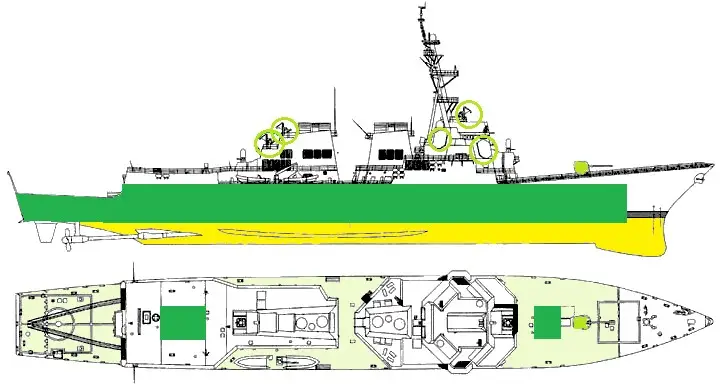
What appearance could a modern protected ship have?
Information